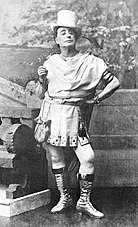
Sir Arthur Wing Pinero was an English playwright and, early in his career, actor.
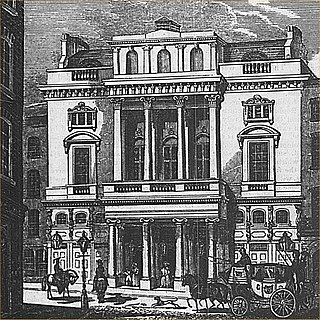
The St James's Theatre was in King Street, St James's, London. It opened in 1835 and was demolished in 1957. The theatre was conceived by and built for a popular singer, John Braham; it lost money and after three seasons he retired. A succession of managements over the next forty years also failed to make it a commercial success, and the St James's acquired a reputation as an unlucky theatre. It was not until 1879–1888, under the management of the actors John Hare and Madge and W. H. Kendal that the theatre began to prosper.
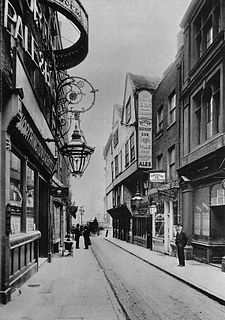
The Opera Comique was a 19th-century theatre constructed in Westminster, London, between Wych Street, Holywell Street and the Strand. It opened in 1870 and was demolished in 1902, to make way for the construction of the Aldwych and Kingsway.

Present Laughter is a comic play written by Noël Coward in 1939 but not produced until 1942 because the Second World War began while it was in rehearsal, and the British theatres closed. The title is drawn from a song in Shakespeare's Twelfth Night that urges carpe diem. The play has been frequently revived in Britain, the US and beyond.
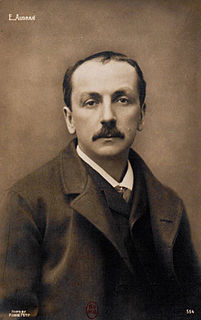
Achille Edmond Audran was a French composer best known for several internationally successful comic operas, including Les noces d'Olivette (1879), La mascotte (1880), Gillette de Narbonne (1882), La cigale et la fourmi (1886), Miss Helyett (1890), and La poupée (1896).

John Lawrence Toole was an English comic actor, actor-manager and theatrical producer. He was famous for his roles in farce and in serio-comic melodramas, in a career that spanned more than four decades, and the first actor to have a West End theatre named after him.
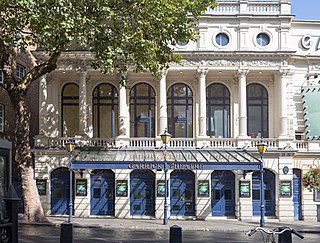
The Garrick Theatre is a West End theatre, located in Charing Cross Road, in the City of Westminster, named after the stage actor David Garrick. It opened in 1889 with The Profligate, a play by Arthur Wing Pinero, and another Pinero play, The Notorious Mrs. Ebbsmith, was an early success at the theatre. In its early years, the Garrick appears to have specialised in the performance of melodrama. The theatre later became associated with comedies, including No Sex Please, We're British, which played for four years from 1982 to 1986.

Dame Irene Vanbrugh DBE was an English actress. The daughter of a clergyman, Vanbrugh followed her elder sister Violet into the theatrical profession and sustained a career for more than 50 years.

Daly's Theatre was a theatre in the City of Westminster. It was located at 2 Cranbourn Street, just off Leicester Square. It opened on 27 June 1893, and was demolished in 1937.
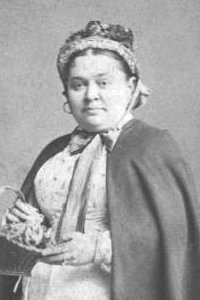
Harriett Everard was an English singer and actress best known for originating the role of Little Buttercup in the Gilbert and Sullivan hit H.M.S. Pinafore in 1878. The character regretfully reveals a key secret that sets up the ending of the opera.
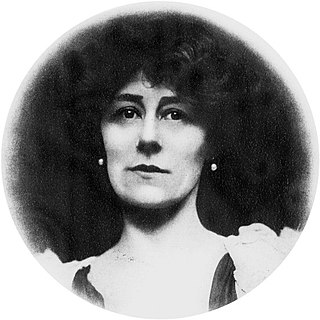
Violet Vanbrugh, born Violet Augusta Mary Barnes, was an English actress who had a career spanning more than 50 years. Despite her many successes, her career was overshadowed by that of her more famous sister Irene Vanbrugh.

The Globe was a Victorian theatre built in 1868 and demolished in 1902. It was the third of five London theatres to bear the name, following Shakespeare’s Bankside house, which closed in 1642, and the former Rotunda Theatre in Blackfriars Road, which for a few years from 1833 was renamed the Globe. The new theatre was also known at various times as the Royal Globe Theatre or Globe Theatre Royal. Its repertoire consisted mainly of comedies and musical shows.

John Hollingshead was an English theatrical impresario, journalist and writer during the latter half of the 19th century. After a journalism career, Hollingshead managed the Alhambra Theatre and was later the first manager of the Gaiety Theatre, London. Hollingshead also wrote several books during his life.
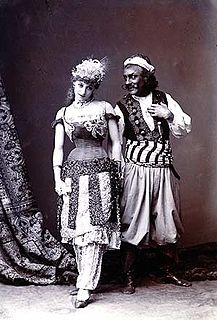
Robert Reece was a British comic playwright and librettist active in the Victorian era. He wrote many successful musical burlesques, comic operas, farces and adaptations from the French, including the English-language adaptation of the operetta Les cloches de Corneville, which became the longest-running piece of musical theatre in history up to that time. He sometimes collaborated with Henry Brougham Farnie or others.

Frank Wyatt was an English actor, singer, theatre manager and playwright.

Lionel Brough was a British actor and comedian. After beginning a journalistic career and performing as an amateur, he became a professional actor, performing mostly in Liverpool during the mid-1860s. He established his career in London as a member of the company at the new Queen's Theatre, Long Acre in 1867, and he soon became known for his roles in Shakespeare, contemporary comedies, and classics, especially as Tony Lumpkin in She Stoops to Conquer.
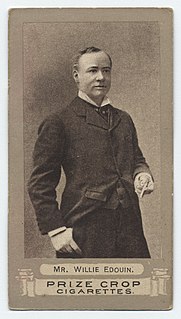
Willie Edouin was an English comedian, actor, dancer, singer, writer, director and theatre manager.

The Harold Pinter Theatre, known as the Comedy Theatre until 2011, is a West End theatre, and opened on Panton Street in the City of Westminster, on 15 October 1881, as the Royal Comedy Theatre. It was designed by Thomas Verity and built in just six months in painted (stucco) stone and brick. By 1884 it was known as simply the Comedy Theatre. In the mid-1950s the theatre underwent major reconstruction and re-opened in December 1955; the auditorium remains essentially that of 1881, with three tiers of horseshoe-shaped balconies.
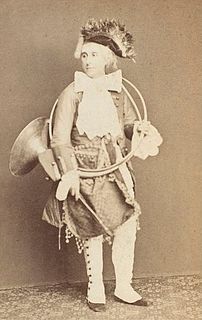
Robert Soutar was an English actor, comedian, stage manager, writer and director for the theatre. He began his career as a journalist but soon moved into acting. In 1867, he married actress Nellie Farren, and the next year, the two joined the company at the Gaiety Theatre in London. There, he stage managed and wrote for the theatre in addition to acting. His wife became well known for her roles as the "principal boy" in musical burlesques at the theatre. Soutar also directed plays and wrote pantomimes and other pieces. His son was the actor and singer Joseph Farren Soutar.

Violet Lydia Thompson, known professionally as Violet Cameron, was an English actress and singer who gained fame in Robert Planquette's operettas Les cloches de Corneville and Rip Van Winkle, and Francis Chassaigne's opéra bouffe Falka, and notoriety for her affair with Hugh Lowther, 5th Earl of Lonsdale.










